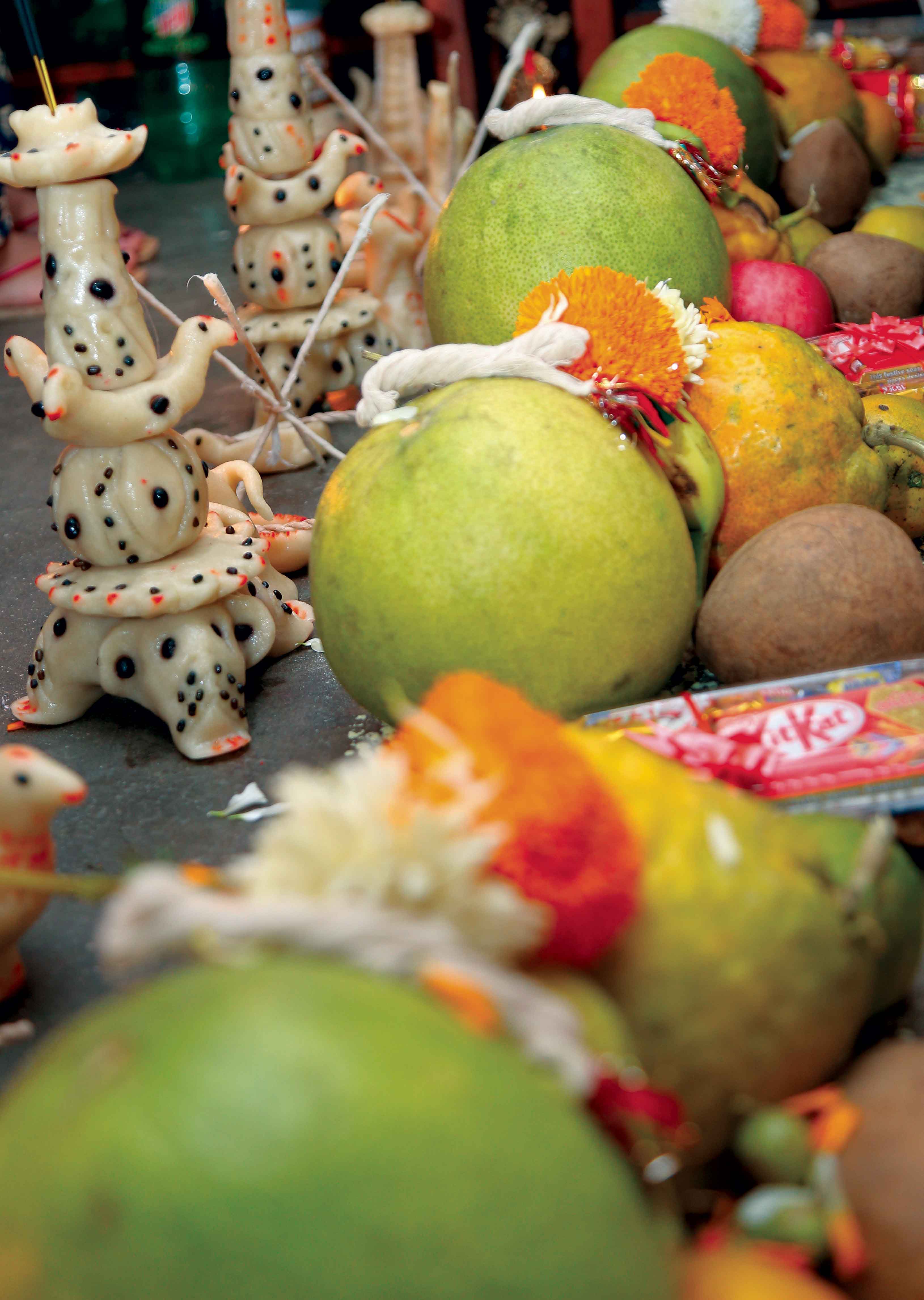Dr. Tirtha Man Maskey is the only person to be appointed Director General of the De partment of National Parks and Wildlife Conservation four times. Whether working at the helm or in the field, his dynamism, his passion and his love for work remain undeterred. He was instrumental in establishing the first national park in Nepal and could not be more at home than when working for conservation. 46-year-old Maskey started his career in conservation way back in 1972, and has continued to work for conservation with dedication and conviction. He spoke of the early days and his inspired work in conservation with Anita Lama at his office in Babar Mahal.
 What was conservation like at its inception?
What was conservation like at its inception?
When I applied for a job in the Ministry of Forestry after completing my graduation, I had two choices: the existing forest department or the National Park, which was a recent development in conservation work. I wanted to opt for conservation, since it was new and hence, challenging. Through this, I could also go for further studies and that in itself was a big attraction for me. At that time we didn’t have any regulation on conservation, there was only a small section under the department of forests. When I joined, we had just three people in the staff; director, his assistant and one administrative officer from the government side and one staff from FAO. Food and Agriculture organization, which is a program under UNDP, had just started the work. I was asked to go to Chitwan to start the first national park of the country, so my boss and I drove through Hetauda as the Mugling road had not yet been built. We drove to the wildlife management division office in Bharatpur where ex-army people were stationed in order to protect the rhinos. After discussions on starting the national park, we established our office in a dilapidated building, built for King George V in 1939. We opened our office on the occasion of late King Birendra’s birthday in 1972. It was not a national park then, and we didn’t have a department, so with two assistants and two rangers deputed by the forest department, we started our program. Our job was to control all illegal activities. Firstly, we had to control grazing, so we got 60 ex-army people for the job. We chased livestock out of the park but that didn’t work either. It was only in 1973, when the National Parks and Wildlife Conservation Act was implemented, that we could impose fines on cattle owners and during that fiscal year we collected more revenue from livestock fines than from tourists. People understood the regulation and so they took their cattle in the forest area outside the park and within 3 or 4 years time, that forest disappeared and I couldn’t see a single tree there.
How was the buffer zone concept received?
The first buffer zone was declared in Royal Chitwan National park. Before that we had a small project called the Park and People Program Project, which was supported by UNDP. We started working with the people and after thirty years of the park’s establishment, people have been changing their outlook towards the park. For twenty years nobody supported the park. They regarded the park as their enemy and after we implemented that project, I went to one of the gatherings. There, I could see hundreds of villagers attending the program and 70 per cent of them were females. I was impressed and during the function, they started praising the national parks and that really encouraged us. Then we started working on the buffer zone and we implemented this concept after approval by the government. About NRs 50 million used to be the income of the park and in one year, we used to contribute around NRs 25 million. Their budget is more than the entire district level budget and that’s why more and more people are attracted to this buffer zone and in fact people ask us to include their area in the buffer zone.
Do you think the buffer zone concept has helped in controlling grazing?
Just recently we declared the buffer zone for Suklaphanta Wildlife Reserve. We are implementing the park people program, participatory conservation program and we are telling them not to graze their cattle inside the park. But it was still not possible for us to control cattle grazing, so we declared this buffer zone just 5 months ago. After the buffer zone declaration, cattle grazing stopped and the people feel they have to protect this area. Local communities are allowed to cut the grass in the park, which is good because when they cut the tall grass for their livestock, short grass comes out, which is good for the deer. They don’t have to send their cattle inside, so the Suklaphanta Wildlife Reserve is a very good example we have. And in Chitwan too, the livestock population is decreasing because we are trying to convince them not to keep livestock just for the sake of producing dung. Now we are providing them with alternatives such as biogas and some improved varieties of ‘chulos’ that consume less firewood.
Tell us about your work on the endangered gharial
After working for two years, I was offered a chance to do my masters in the US. I knew that after my masters, I would be going back to Chitwan, so I decided to study the gaur as it was a rare animal. In the entire world, only 160 gaurs were found. Out of that, 100 were in India, 50 in Nepal and some 10 in Bangladesh and Bhutan. After I came back, I was re-appointed as warden of Chitwan. However, in 1977 the status of the gharial was very critical. In India, again with the FAO program, they had started a crocodile conservation program mainly to breed crocodile in captivity, rear them and release them back into the wild. But they were unable to find wild nests in India, so they came to us to buy gharial eggs. At that time, we had not included the gharial among endangered species and there was a provision in the law which allowed people to hunt a crocodile after paying only about NRs.100. One egg meant one crocodile, so that’s how we calculated. The Indians were successful in hatching the eggs in captivity, so they came back the following year. This time we gave them the eggs for free upon mutual understanding. So after 6 or 7 months, we asked them to provide us with 50 per cent of the gharial as agreed, but they told us our portion had died. Fortunately, in the same year, a popular scientist from Frankfurt Zoological Society happened to visit there, and he was so impressed with the gharial in the river that he provided us with some funding to start captive breeding. Hence, in 1978 we started the project and since then we also don’t give any eggs to India. Gharial babies were kept near our office, so I could spend more time with the gharial than the gaur. That’s why I switched my subject and started keeping data on the gharial. I started publishing articles, and one day the director of the USIS, impressed with my work, asked me if I was interested in doing my Ph.D on gharials. That’s how I got my Ph.D from Florida University, which is famous for alligator studies.
What is the story behind Maskey’s burrowing frog?
After my Ph.D, I started working in the department as chief warden. A friend of mine, herpetologist from Germany used to come here regularly to study the reptiles and amphibians. I started working on a reptile and amphibian survey with him, so we would meet and collect some of the specimens. During the monsoons we could collect more species of frogs, toads, snakes and lizards. On one rainy night in the Sauraha area in Chitwan, after one or two pegs of rum, we went to collect frogs. We took the torches and collected whatever we could find. Next morning when we checked, we found only frogs, so we identified whatever we could and marked them. What we couldn’t identify, we kept for later identification and he took some of these specimens with him when he left Nepal. One day I got an email from him saying that the frog I had collected was found to be a new species from the country. He got permission from the nomenclature society to name the new species of animal and he named it after my surname. That frog is called ‘Maskey’s burrowing frog’. It’s a very tiny frog and very hard to find in the wild.
In what way is your department involved with KMTNC?
KMTNC is our old partner. They are assisting us in the conservation work and they manage two conservation areas, Annapurna Conservation Area and Manaslu Conservation Area, which has proved to be very successful in the People Participatory program in conservation and in fact the Annapurna Conservation Area is a world renowned conservation area from where the message of people participation in conservation spread all over the world.
When does the lease term for the lodges located inside the Chitwan National Park expire? After the lease runs out, will they be allowed to operate again within the national parks?
The lease will expire after 6 years on the same date. The renewal of lease term depends upon the EIA (Environment Impact Assessment). We have to do environment impact study, one year before the lease runs out. If these establishments are not causing harm, their lease term could be extended.
What is the department getting in return for allowing these lodges to operate?
We are getting revenue from them, for example at the moment, Tiger Tops is paying around NRs 3 million a year and Gaida Wildlife Camp, second oldest one, pays about NRs 2 million a year, plus they also pay about NRs 2 million a year as conservation fee which is deposited in the King Mahendra Trust for Nature Conservation to be used again for community development and park management.
Do community forests come under the Department of National Parks?
No! Community forests are under the Department of Forests. We manage the buffer zone community forests, which is a little different to community forests. In the community forests they can sell their products to other areas, but in the buffer zone forests, they cannot sell to other areas. They have to consume the products themselves.
How is your department involved with the Tarai Arc Landscape (TAL) program?
TAL program is a very ambitious program. Actually it covers the area from Bagmati River in Nepal to Yamuna River in India and it includes some 11 different protected areas from India and Nepal, 5 from Nepal and the rest from India. Actually, 2 departments are involved in TAL area, inside the protected areas, Department of National Parks is responsible to implement the program and outside the protected areas, Department of Forests is responsible to implement the program. So this program is designed for long term conservation of 3 mega species; the tiger, rhino and the elephant. We have seen protected areas becoming isolated because the population is increasing and there is no good conservation outside the protected areas. Where the population grows, we need to create some corridors and connectivity so that the 3 mega species from one protected area can move to the other protected area and on that basis, we have designed the TAL program. It also involves the local communities in conservation and gives benefit to the local community.
Future plans and upcoming programs of the department?
Our future plan is to declare buffer zones for all the protected areas, so right now we are working on the corridor and connectivity concept, the eco-region conservation concept.











